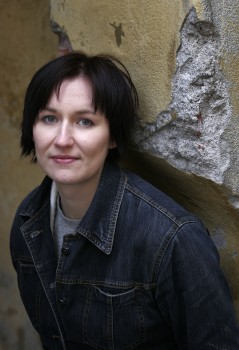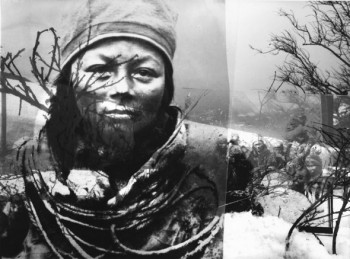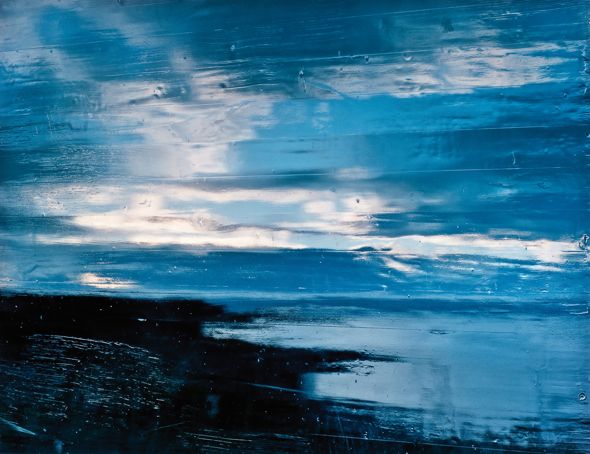Search results for "harjunpää/2010/10/mikko-rimminen-nenapaiva-nose-day"
Jarkko Laine Prize 2011
1 June 2011 | In the news
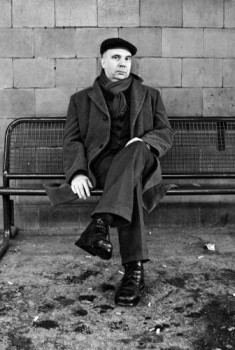
Juha Kulmala. Photo: Lotta Djupsund
The Jarkko Laine Literary Prize (see our news from 6 May), worth €10,000, was awarded to Juha Kulmala (born 1962) on 19 May for his collection of poems entitled Emme ole dodo (‘We are not dodo’, Savukeidas, 2009).
The prize is awarded to a ‘challenging new literary work’ published during the previous two years. Shortlisted were also two novels, Kristina Carlson’s Herra Darwinin puutarhuri (‘Mr Darwin’s gardener’, Otava, 2009) and Erik Wahlström’s Flugtämjaren (‘Fly tamer’, Finnish translation Kärpäsenkesyttäjä, Schildts, 2010).
Jarkko Laine (1947–2006) was a poet, writer, playwright, translator, long-time editor of the literary journal Parnasso and chair of the Finnish Writers’s Union.
Kaipaus Karjalaan. Matkoja kotiseudulle [Longing for Karelia. Journeys to the homeland]
8 October 2010 | Mini reviews, Reviews
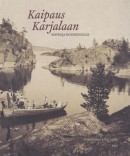 Kaipaus Karjalaan. Matkoja kotiseudulle
Kaipaus Karjalaan. Matkoja kotiseudulle
[Longing for Karelia. Journeys to the homeland]
Toim. [Ed. by] Liisa Lehto
Helsinki: Finnish Literature Society, 2010. 231 p., ill.
ISBN 978-952-222-167-4
€34, hardback
The interest among Finns in making journeys to the areas of Karelia that were lost to the Soviet Union after the wars of 1939–1944 has showed no signs of lessening. On the contrary: the increasing preoccupation of researchers and ordinary citizens with the roots of the Karelians and with their modern way of life makes it possible to speak of a kind of Karelian renaissance. The opening of the borders after the fall of the Soviet Union triggered an enormous enthusiasm for tourism. This book contains fifty accounts of such journeys, drawn from the material of the Finnish Literature Society’s Folklore Archives collected in 1992 and 2007. The personal travel stories are by writers of different ages – the oldest was born in 1906, the youngest in the 1980s – and they focus on attitudes to loss of homeland that range from deep feelings of anger and failure to emotions of joy and of ‘reconciliation with oneself and with the whole of one’s life.’ Acts of purification in the water of the home village well or of swimming in Lake Ladoga are described in terms of a sacred ritual.
Icy prospects
8 October 2010 | This 'n' that
Photographer Jorma Puranen (born 1951) has long been concerned with nature and the representation of northern landscapes, particularly Lapland, as well as light and its reflection.
One of his most famous projects is Imaginary Homecoming. In the 1990s, on a visit in the Musée de l’Homme in Paris, he found some old archive boxes full of glass negatives. They were ethnographical images of the Sámi, taken by G. Roche, employed by the French Count Bonaparte on an expedition to Lapland in 1884.
Puranen took them back to the wildernesses of Lapland and photographed them once more in their native surroundings, where they became a photographic installation in the tundra. He published them in his book Kuvitteellinen kotiinpaluu / Imaginary Homecoming (Pohjoinen, 1999).
Puranen’s 2006 series Icy Prospects explores landscape: the large pictures are made by painting wood with black gloss paint, reflecting the landscape on the wood and photographing the reflection.
Snow, ice, water, sky and trees are portrayed the way that brings Impressionism to mind, as Liz Wells writes in her introduction in the book entitled Icy Prospects, published by Hatje Cantz (Germany, 2009).
A new exhibition of Jorma Puranen’s work from 1992 to 2010, at EMMA, the Espoo Museum of Modern Art, opened on 29 September; it runs until 9 January 2011. Partly retrospective, it features Puranen’s techniques of chromogenic colour and black and white photography, showcasing his highly original style.
Grim(m) stories?
30 April 2010 | Letter from the Editors
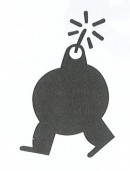 ‘There’s not been much wit and not much joy, there’s a lot of grimness out there.’
‘There’s not been much wit and not much joy, there’s a lot of grimness out there.’
This comment on new fiction could have been presented by anyone who’s been reading new Finnish novels or short stories. The commentator was, however, the 2010 British Orange Prize judge Daisy Goodwin, who in March complained about the miserabilist tendencies in new English-language women’s writing. More…
Utopia or cacotopia?
19 August 2011 | Extracts, Non-fiction
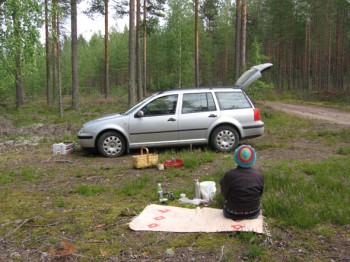
Viljakansaari, Finland, 2008. ©Merja Salo
Do we live in the age of autopia, and if we do, what does that mean? On this earth there are now perhaps 800 million cars, all vital to our modern lifestyles. Professor and photographer Merja Salo observes landscapes through her camera with this question in mind
Extracts and photographs from Carscapes. Automaisemia (Edition Patrick Frey & Musta Taide, 2011. Translation: Laura Mänki)
The car may be the vehicle for the everyman, but not every man is a good driver. According to Hungarian- born psychoanalyst Michael Balint, good drivers have the psychological structure of philobats. With their sense of sight, they perceive space well and control it by steering their vehicle skilfully. Ocnophiles, on the other hand, are more at home as passengers. They structure the world through intimacy and touch. When driving, they cling anxiously to the steering wheel and do not perceive the continously changing situations in traffic.
‘The Lion of the North’ wins the non-fiction Finlandia Prize
25 November 2014 | In the news
The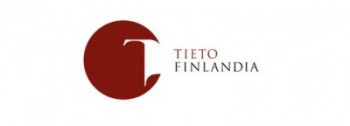 Finlandia Prize for Non-Fiction 2014, worth €30,000 and awarded by Suomen Kirjasäätiö (The Finnish Book Foundation), went to the historian and author Mirkka Lappalainen on 19 November for her book on a 17th-century Swedish king.
Finlandia Prize for Non-Fiction 2014, worth €30,000 and awarded by Suomen Kirjasäätiö (The Finnish Book Foundation), went to the historian and author Mirkka Lappalainen on 19 November for her book on a 17th-century Swedish king.
The winning entry, entitled Pohjolan leijona, Kustaa II Adolf ja Suomi 1611–1632 (‘The Lion of the North. Gustavus II Adolphus and Finland 1611–1632’, Siltala), was chosen by from a shortlist of six finalists by Heikki Hellman, journalist and Dean of the School of Communication, Media and Theatre in Tampere. According to him, ‘Pohjolan leijona is an exceptionally well-written narrative for a non-fiction book; the author uses both earlier literature and numerous primary and secondary sources with great skill. Lappalainen succeeds in demonstrating how, during the reign of Gustavus II Adolphus, both Sweden and its easterly province, Finland, began to develop an organised society with its structure of officials and bureaucracy, how jurisdiction replaced the arbitrary rule of the aristocracy and how it was only then that Finland developed its role as part of Sweden. Pohjolan leijona sweeps the reader along and helps us to understand where we have come from and who we are.’
Hellman also commented on the growing practice of publishing non-fiction texts in English only: ‘Research is not done only for other scholars; it must also be relevant to people’s lives and be brought to their attention. We must also publish in our mother tongue, or else it will not survive as a language for research. This is one of the reasons why non-fiction is so necessary.’
Mirkka Lappalainen has received other prizes for her work. Susimessu (‘Wolf mass’), for example, was voted History Book of the year in 2010.
Riitta Jalonen & Kristiina Louhi: Aatos ja Sofia [Aatos and Sofia]
28 January 2011 | Mini reviews, Reviews
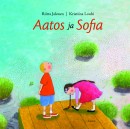 Aatos ja Sofia
Aatos ja Sofia
[Aatos and Sofia]
Kuvitus [ill. by]: Kristiina Louhi
Helsinki: Tammi, 2010. 36 p.
ISBN 978-951-31-5240-6
€14.30, hardback
Riitta Jalonen (born 1954) writes books for children and adults with the same emotional intensity. This picture book throws readers in alongside two children, Aatos and Sofia, to play in a sandpit. Aatos (or ‘Thought’, in Finnish) is a bit of a dreamer, while Sofia, who is slightly older, takes a more practical approach to life. As in her Tyttö (‘Girl’) trilogy, Riitta Jalonen uses an impressionistic mode of storytelling. Through a selection of brief, random scenes, Aatos ja Sofia tells the deeply personal story of a little boy’s fondness for his playmate. Kristiina Louhi’s bold, broad-brush illustrations have an almost hypnotic effect on the reader.
Translated by Ruth Urbom
Kirjallinen kulttuuri keskiajan Suomessa [Literary culture in medieval Finland]
1 June 2011 | Mini reviews, Reviews
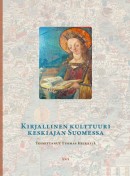 Kirjallinen kulttuuri keskiajan Suomessa
Kirjallinen kulttuuri keskiajan Suomessa
[Literary culture in medieval Finland]
Toim. [Ed. by] Tuomas Heikkilä
Helsinki: Finnish Literature Society, 2010. 480 p., ill.
ISBN 978-952-212-223-7
€ 36, hardback
The literary material from Finland’s medieval period is both more extensive and more interesting than previously thought. A team of scholars has gone through almost all of the material that survives, from the eleventh to the sixteenth century: missals, merchants’ correspondence, vernacular writings and state papers. Literary culture arrived in Finland with Christianity. During the Middle Ages the language of theologians and scholars on Finnish territory was Latin, the principal language of trade was Low German, and affairs of state were conducted in Swedish. This book examines how, when and where the texts were written and what their distribution says about Finnish literary tastes of earliest times. The scholars have done detective work, tracing and connecting parchment missals which ended up as the bindings of bailiffs’ ledgers. The book takes as its main source the National Library’s Fragmenta Membranea, one of the world’s largest collections of medieval parchment fragments. It is planned to digitise the collection and make the fragments freely accessible to both scholars and the general public.
Translated by David McDuff
Peter von Bagh: Sodankylä ikuisesti [Sodankylä forever]
11 June 2010 | Mini reviews, Reviews
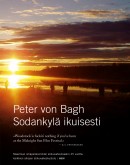 Sodankylä ikuisesti
Sodankylä ikuisesti
[Sodankylä forever]
Helsinki: WSOY, 2010. 308 p., ill.
ISBN 978-951-0-36290-7
€ 52, hardback
The Midnight Sun Film Festival is the world’s northernmost film festival. Held in Sodankylä, Lapland, it is now 25 years old. This scrapbook includes the text of speeches given by filmmakers as well as a wealth of material about the films shown over the years. Much of this material is based on the morning discussion panels which the festival’s director, film historian and author Peter von Bagh, has chaired with his guests. More than one hundred film directors, from Samuel Fuller to Wim Wenders, talk about the background and influences in their work. Von Bagh has constructed dialogues between directors who did not actually attend the same sessions; he calls these conversations – sometimes between the living and the dead – ‘heavenly dialogues’. The Festival was founded by Finnish film directors Aki and Mika Kaurismäki and Anssi Mänttäri in collaboration with the municipality of Sodankylä. The light summer nights and laid-back atmosphere at the festival delight the speakers and audience members every year. In the words of the American filmmaker D.A. Pennebaker, ‘Woodstock is fuckin’ nothing if you’ve been at the Midnight Sun Film Festival.’
What was Finland reading this summer?
2 September 2010 | In the news
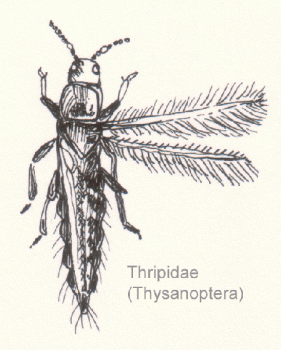 Novels, thrillers and comics were on the June–July list of best-selling books according to the Booksellers’ Association of Finland.
Novels, thrillers and comics were on the June–July list of best-selling books according to the Booksellers’ Association of Finland.
And, as the popular poet, MP, novelist and television celebrity Tommy Tabermann (born 1947) died in June, his collected poems, Runot 1970–2010 became number one of the list.
Sofi Oksanen’s highly popular novel Puhdistus (Purge) has kept itself on the list for a long time, was now at number three. Tuomas Kyrö’s humorous novel about a man in his 80s, Mielensäpahoittaja (‘Taking offense’) was at number seven, Pertti Jarla’s Fingerpori 3 at number eight and Leena Lander’s new novel Liekin lapset (‘Children of the flames’) at number ten.
The top ten list of translated fiction included works by Jo Nesbø, Charlaine Harris, John Irving, Donna Leon and Dagsson Hugleikur.
During the summer there’s clearly enough time for nature observations: The Cloudspotter’s Guide by Gavin Pretor-Pinney, a work presenting birds’ sounds and a book on bugs and creepy crawlies were among the ten best-selling non-fiction books.
Kirjoituksia sankaruudesta [Writings on heroism]
25 March 2011 | Mini reviews, Reviews
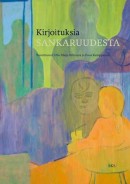 Kirjoituksia sankaruudesta
Kirjoituksia sankaruudesta
[Writings on heroism]
Toim. [Ed. by] Ulla-Maija Peltonen & Ilona Kemppainen
Helsinki: Suomalaisen Kirjallisuuden Seura, 2010. 330 p., ill.
ISBN 978-952-222-207-7
€ 29, paperback
This book examines Finnish heroism and anti-heroism by using approaches from folklore studies, history and literary theory. Political ‘heroism’ manufactured by the media is explored through a study of in-depth personal portraits of Finnish politicians published in the country’s biggest newspaper, Helsingin Sanomat, between 1981 and 2005. According to the research material, a positive impression is made by a narrative about a politician who is an independent thinker even in the context of his own party, from an ordinary home, engaged in manual work in his youth and risen to success overcoming setbacks through his own merits and without intrigue. The story of the European Union’s Commissioner for Economic and Monetary Affairs, Olli Rehn, is a heroic story about a politician who dares believe in a European Finland even when it was disadvantageous to his career. Since the 1990s, writers have begun to take a renewed interest in war heroism; the climate in the 1960s and 1970s was pacifist, but now the ‘Winter War spirit’, which is deemed heroic, has been surfacing in an ever-increasing variety of situations, including economic crises.
Translated by Ruth Urbom
Ulla Jokisalo & Anna Kortelainen
Pins and needles
11 May 2011 | Essays, Non-fiction
In these pictures by Ulla Jokisalo and texts by Anna Kortelainen, truths and mysteries concerning play are entwined with pictures painted with threads and needles. Jokisalo’s exhibition, ‘Leikin varjo / Guises of play’, runs at the Museum of Photography, Helsinki, from 17 August to 25 September.
Words and images from the book Leikin varjo / Guises of play (Aboa Vetus & Ars Nova and Musta Taide, 2011)
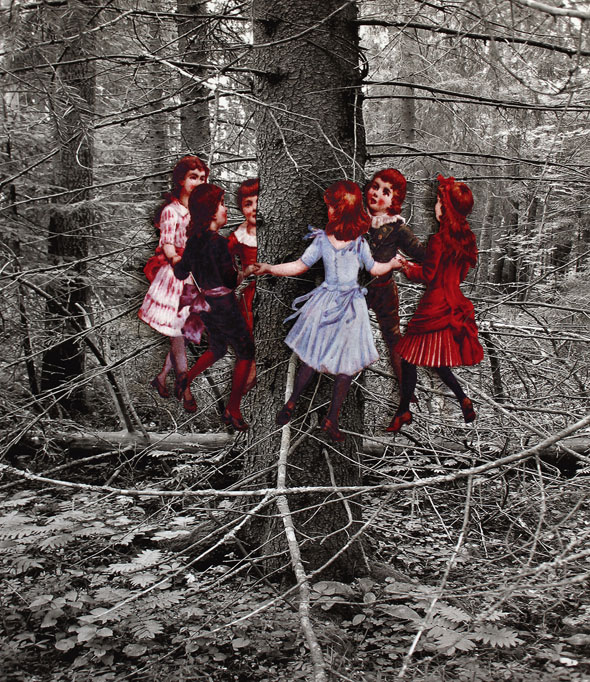
‘Ring dance’ by Ulla Jokisalo (pigment print and pins, 2009)
Our favourite things
29 January 2010 | Letter from the Editors
Every reader has his or her favourite book. It is possible to define, with acceptable criteria, when a work of fiction is ‘a good novel’: do the plot, characterisation and language work, does it have anything to say? But when is a ‘good’ novel better than another ‘good’ novel? More…
Panu Rajala: Lasinkirkas, hullunrohkea [Glass-clear, daredevil]
20 May 2010 | Mini reviews, Reviews
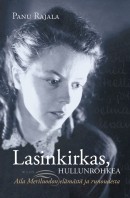 Lasinkirkas, hullunrohkea. Aila Meriluodon elämästä ja runoudesta
Lasinkirkas, hullunrohkea. Aila Meriluodon elämästä ja runoudesta
[Glass-clear, daredevil]
Helsinki: WSOY, 2010. 417 p., ill.
ISBN 978-951-0-35488-9
€39, hardback
Aila Meriluoto (born 1924) is a poet, author and translator whose first collection of poems, entitled Lasimaalaus (‘Stained glass’), sold more than 25,000 copies in 1946. She became a celebrity of her time, as her young, fresh voice expressed post-symbolist visions and, after the long, cruel years of the war, spoke defiantly about the death of God. Hailed as a youthful prodigy, she was favoured by the dominant poet and professor of literature, V.A. Koskenniemi. Meriluoto has published ten collections of poems, as well as novels, children’s books, diaries, memoirs, and a book about her first husband, the poet and author Lauri Viita (1916–1965). She has translated works by Rainer Maria Rilke, Harry Martinson and Astrid Lindgren. This biography tends to concentrate on the writer’s personal history rather than on her works. The author and scholar Panu Rajala and Meriluoto became acquainted in the 1970s, and he calls his biography ‘a subjective testimonial’. Rajala has written plays, novels and film scripts as well as biographies, among them one of the classic author Mika Waltari (1908–1979).

